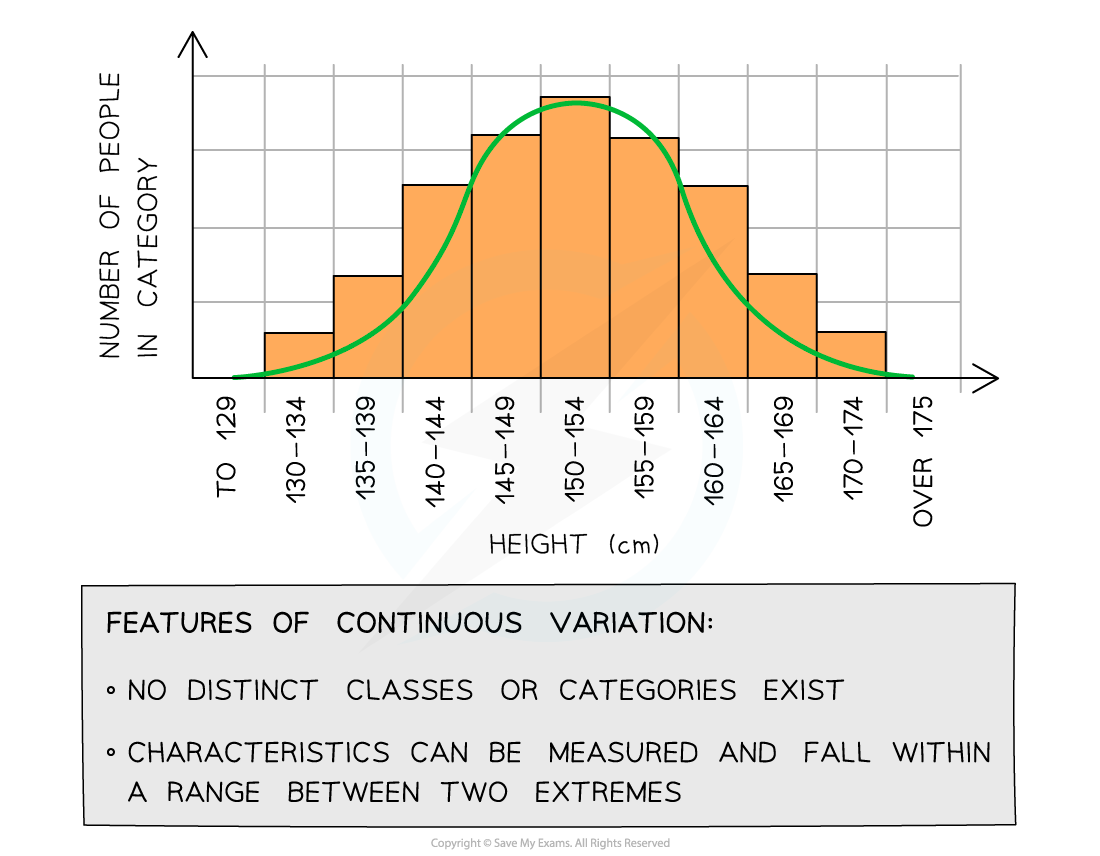Continuous & Discontinuous Variation (OCR A Level Biology): Revision Note
Exam code: H420
Continuous & Discontinuous Variation
The term variation refers to the differences that exist between at least two things (be it a level, amount, quantity or feature of something)
In relation to natural selection, variation refers to the differences that exist between individuals of a species
This may also be referred to as intraspecific variation
The variation observed in the phenotypes of organisms can be due to quantitative or qualitative differences
For this reason, variation is categorised into two groups:
Continuous variation
Discontinuous variation
Continuous variation is the differences between individuals of a species where the differences are quantitative (measurable)
Discontinuous variation refers to the differences between individuals of a species where the differences are qualitative (categoric)
Each type of variation can be explained by genetic and/or environmental factors
Continuous variation
Continuous variation occurs when there are quantitative differences in the phenotypes of individuals within a population for particular characteristics
Quantitative differences do not fall into discrete categories like in discontinuous variation
Instead for these features, a range of values exist between two extremes within which the phenotype will fall
For example, the mass or height of a human is an example of continuous variation
The lack of categories and the presence of a range of values can be used to identify continuous variation when it is presented in a table or graph

Graph showing population variation in height: an example of continuous variation with quantitative differences
Genetic basis of continuous variation
This type of variation is caused by an interaction between genetics and the environment
Phenotype = genotype + environment
At the genetic level:
Different alleles at a single locus have a small effect on the phenotype
Different genes can have the same effect on the phenotype and these add together to have an additive effect
If a large number of genes have a combined effect on the phenotype they are known as polygenes
Discontinuous variation
Qualitative differences in the phenotypes of individuals within a population give rise to discontinuous variation
Qualitative differences fall into discrete and distinguishable categories, usually with no intermediates (a feature can’t fall in between categories)
For example, there are four possible ABO blood groups in humans; a person can only have one of them
It is easy to identify discontinuous variation when it is present in a table or graph due to the distinct categories that exist when data is plotted for particular characteristics

Graph showing population variation in blood types: an example of discontinuous variation with qualitative differences
Genetic basis of discontinuous variation
This type of variation occurs solely due to genetic factors
The environment has no direct effect
Phenotype = genotype
At the genetic level:
Different genes have different effects on the phenotype
Different alleles at a single gene locus have a large effect on the phenotype
Remember diploid organisms will inherit two alleles of each gene, these alleles can be the same or different
A good example of this is the F8 gene that codes for the blood-clotting protein Factor VIII
The different alleles at the F8 gene locus dictate whether or not normal Factor VIII is produced and whether the individual has the condition haemophilia
Comparison of Continuous and Discontinuous Variation Table


Unlock more, it's free!
Did this page help you?